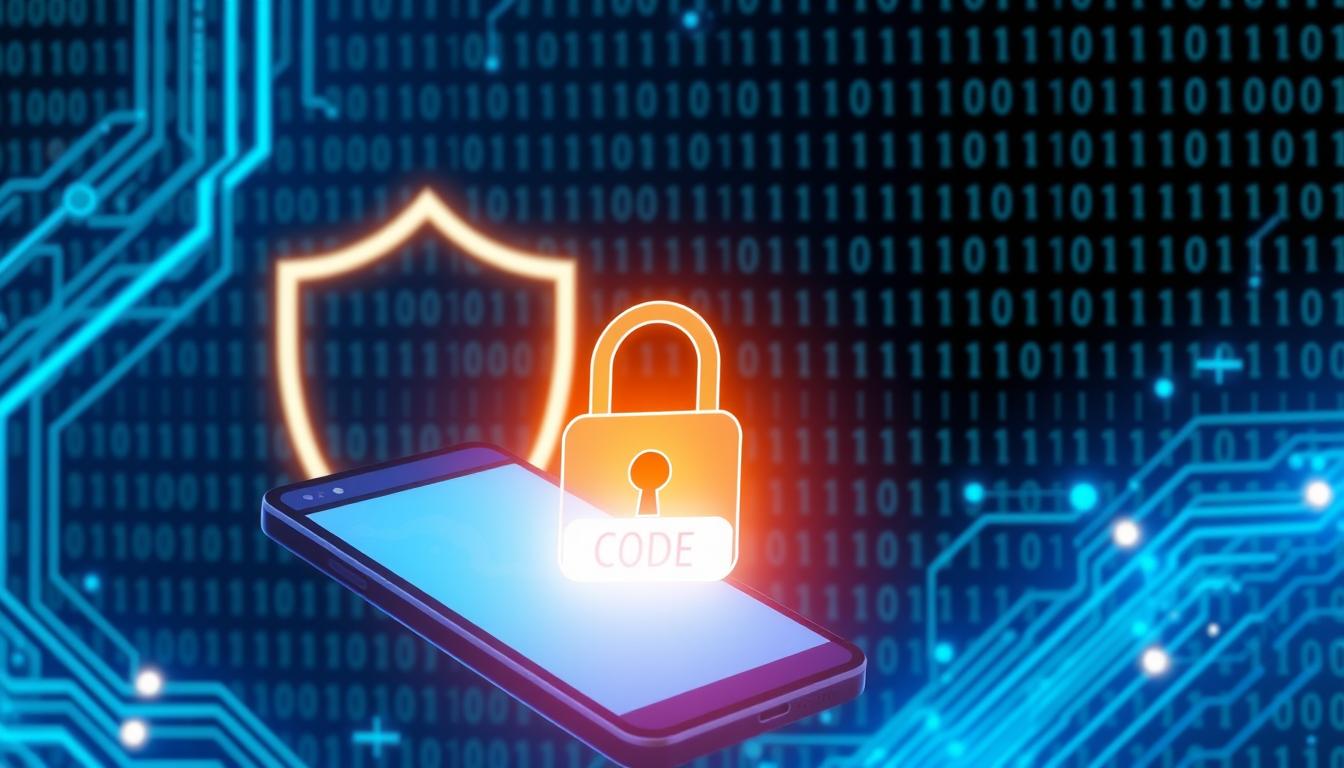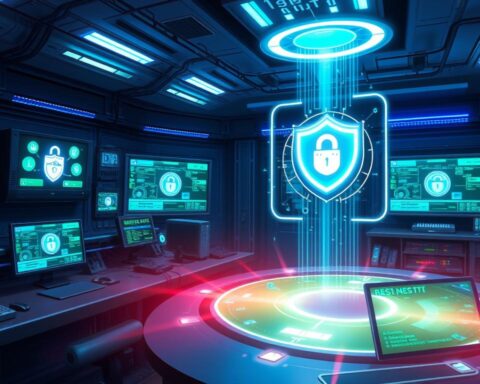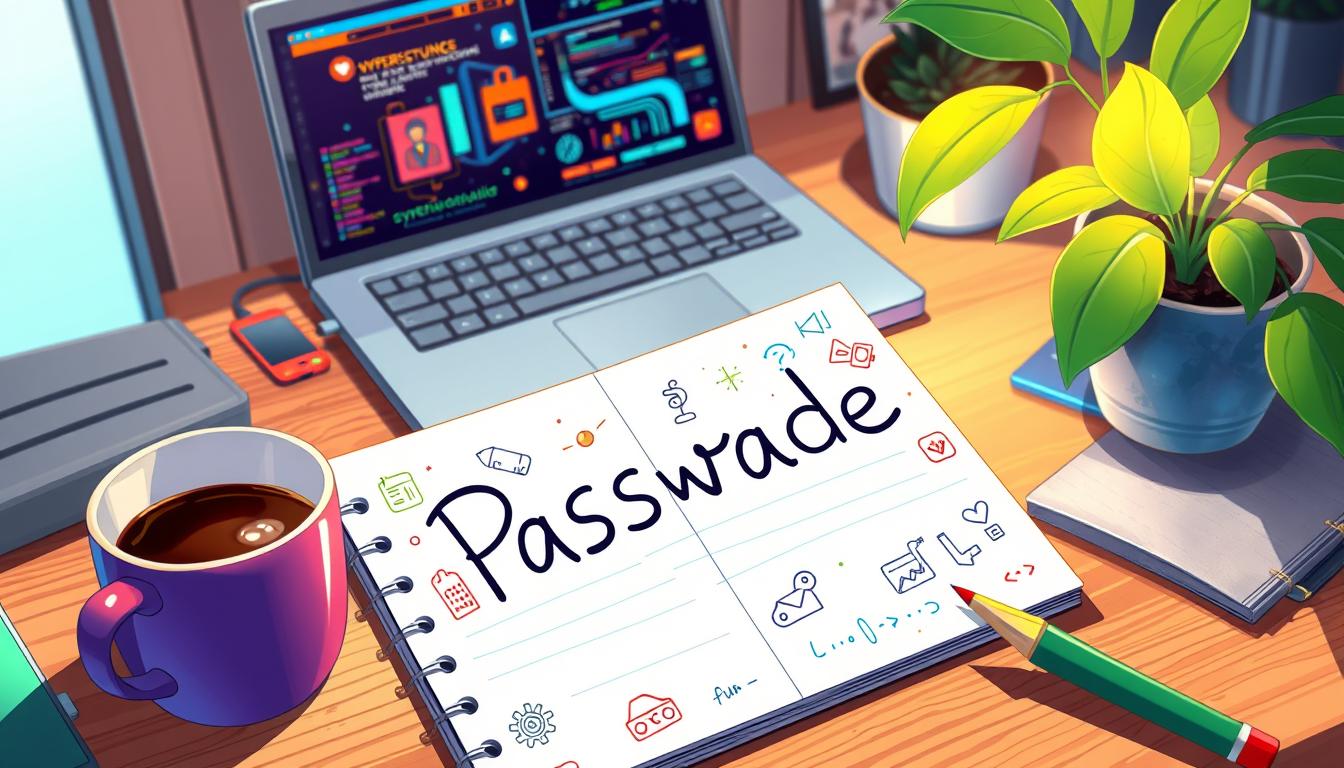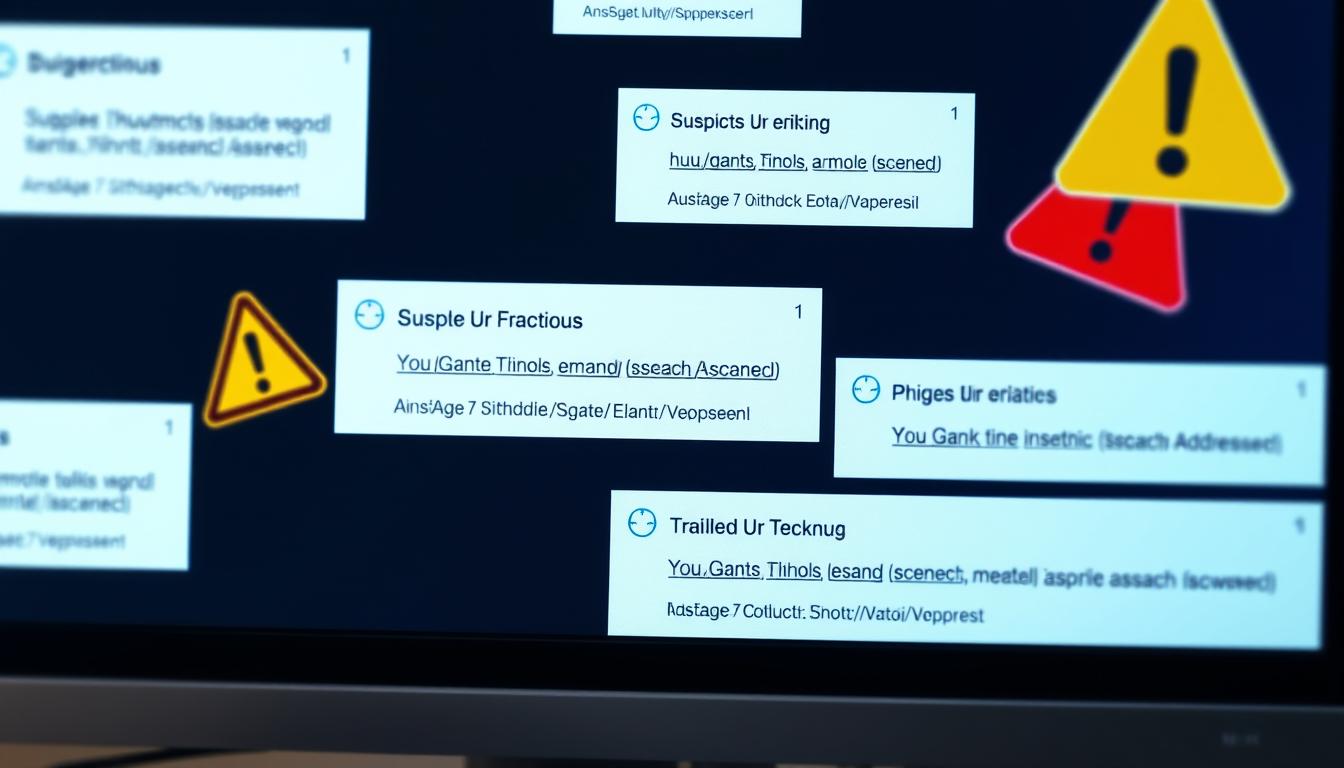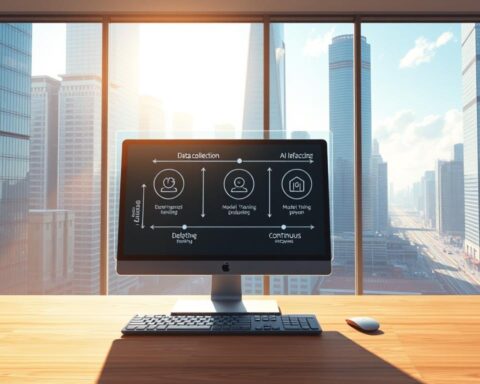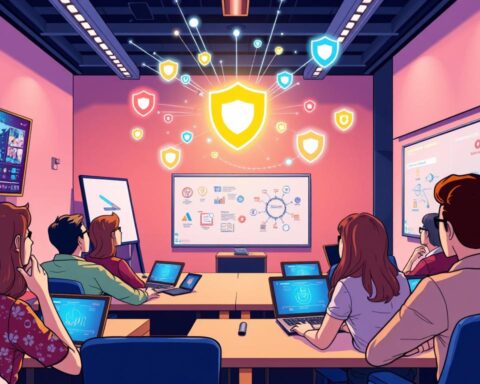A staggering 83% of companies will face a data breach, sometimes more than once1. This shows the need for strong cybersecurity, like knowing how two-factor authentication works. It adds an extra layer of security, making it harder for hackers to get in.
Using multi-factor authentication (MFA) can stop 99.9% of attacks on accounts1. With the average data breach in the U.S. costing $9.44 million1, it’s key to understand two-factor authentication’s benefits. It helps protect both individuals and businesses from security breaches.
For more on multi-factor authentication, check out this guide. It explains why two-factor authentication is important and how it stops cyber attacks.
Key Takeaways
- Two-factor authentication is a key part of cybersecurity, adding an extra layer of security to stop unauthorized access.
- Using multi-factor authentication (MFA) can stop 99.9% of attacks on accounts1.
- It’s important to know how two-factor authentication works and its benefits to protect users and businesses from security breaches.
- It’s good to have regular cybersecurity training for employees, like monthly or quarterly, to keep them safe1.
- Strong passwords should be at least 12 characters long, and even better with 16+ characters for more security1.
- Two-factor authentication offers better security, less risk of data breaches, and meets regulatory requirements.
Understanding the Basics of Two-Factor Authentication
Two-factor authentication (2FA) is a way to make accounts more secure. It needs two different kinds of identification to log in. This could be something you know, like a password, or something you have, like a smart card.
The 2fa process explained combines these factors for extra security. It makes it harder for hackers to get into your account.
The steps for multi-factor authentication include using two of three types: knowledge-based, possession-based, and inherence-based. Experts say 2FA should be used everywhere, like on email, social media, and financial sites2. But, using SMS for 2FA is risky, so it’s not used in banking anymore3.
Some good things about 2FA are:
- It makes accounts more secure than just passwords
- It helps protect against password theft
- It adds a strong defense against cyber attacks
To learn more about password security and multi-factor authentication, check out Miloriano.com. Even with 2FA, hackers can find ways in, like through phishing or malware2. But, it does make it harder for them to get into your account.
How Two-Factor Authentication Works in Practice
Two-factor authentication adds an extra layer of security to logging in. It uses two different ways to check who you are. This is important because over 20 billion email and password combinations are out there, making passwords less secure4.
There are many ways to use two-factor authentication. For example, you might need to enter a password and then get a code sent to your phone. Or, you could use an app to get a special login code. Even biometric data like fingerprints can be used5.
Using two-factor authentication makes your account safer. It’s like having a backup plan for your login. This is key because 86% of breaches happen because of stolen login info4.
Two-factor authentication is also flexible and easy to use. You can pick from different methods like SMS codes, apps, or biometric data. This makes it simple to keep your account safe, no matter where you are5.
| Method | Description |
|---|---|
| SMS codes | A one-time code is sent to the user’s phone via SMS |
| Authenticator apps | An app generates a time-based one-time password (TOTP) or a HMAC-based one-time password (HOTP) |
| Biometric data | Fingerprints, facial recognition, or other biometric data is used as a second factor |
Common Types of 2FA Methods
It’s important to know how two-factor authentication works today. There are many types of 2FA methods, each with its own benefits and drawbacks. These include SMS and phone-based, authenticator apps, hardware security keys, and biometric authentication6. These add an extra layer of security, making it harder for hackers to get into your accounts.
Some popular methods include push notifications, U2F/WebAuthn Security Keys, email links, and more7. The right choice depends on how secure you need it and what you prefer. For example, biometric verification is becoming more common, using things like fingerprints and facial recognition7.
The table below shows some 2FA methods and what they do:
| Method | Description |
|---|---|
| SMS and Phone-Based Authentication | Sends a one-time code to the user’s phone via SMS or voice call |
| Authenticator Apps | Generates a TOTP or HOTP that must be entered to complete the login process |
| Hardware Security Keys | Provides a physical token that must be inserted into a device to complete the login process |
| Biometric Authentication | Uses unique physical characteristics to verify a user’s identity |
Knowing about two-factor authentication helps us choose the best methods for security6. This is true for both individuals and organizations. It’s all about keeping our online world safe.
Setting Up Two-Factor Authentication
Setting up two-factor authentication is easy and takes just a few steps. The 2fa process explained starts with enabling it in your account settings. Then, choose a second factor and test it to make sure it works. Experts say using 2FA can make your account up to 90% safer8.
The steps for multi-factor authentication can differ based on where you use it. But, most places ask for a password and a code sent to your phone or an app. It’s key to pick a secure second factor, like a password manager for complex passwords.
Using two-factor authentication has many benefits. It lowers the chance of someone getting into your account without permission. In fact, 99.9% of hacking attempts fail with 2FA9. Plus, it boosts your account’s security by about 80%9.
- Enable two-factor authentication in your account settings
- Select a second factor, such as a phone number or authenticator app
- Complete a test login to verify the setup
By doing these steps and picking a safe second factor, you can greatly lower the risk of your account being hacked.
Security Benefits and Risk Mitigation
Using secure login methods, like dual-factor authentication, can greatly lower cyber attack risks. A study shows that 61% of data breaches come from stolen login details. This is a big drop with Two-Factor Authentication (2FA)10. It shows how vital it is to use secure logins to fight off cyber threats.
Companies gain a lot from using dual-factor authentication. It adds an extra security layer beyond just passwords. This helps fight off phishing, password hacking, and social engineering11. With more checks, it’s harder for hackers to get in, even if they get a password right.
Also, using biometrics and mobile solutions is becoming more common for better 2FA12. Big names like Google, Microsoft, and Amazon have made their users’ accounts safer with 2FA. By doing the same, businesses can strengthen their security and cut down on data breaches.
By using secure login methods and dual-factor authentication, companies can lower risks and fight off common cyber attacks. This boosts user trust online and makes it less likely for accounts to be hacked10. So, it’s key for businesses to keep their systems and data safe with secure logins.
Best Practices for Managing 2FA
When you start using two-factor authentication, it’s key to think about how easy it is for users. Make sure the second factor is safe and works well13. Give users clear help and check 2FA settings often to keep them strong. Knowing how 2FA works helps set it up right, and seeing its benefits helps make smart choices.
It’s important to make 2FA easy for users. Use smart retry logic to stop abuse and keep API limits in check13. Letting users pick their own methods can make them happier by about 60%, making things better for them13.
Some top tips for 2FA management include:
- Use a multi-factor solution to cut security issues by up to 75%13
- Push notifications can block over 50% of fraud, thanks to phishing resistance13
- Offer ways to recover accounts to cut down on support calls by up to 40%13
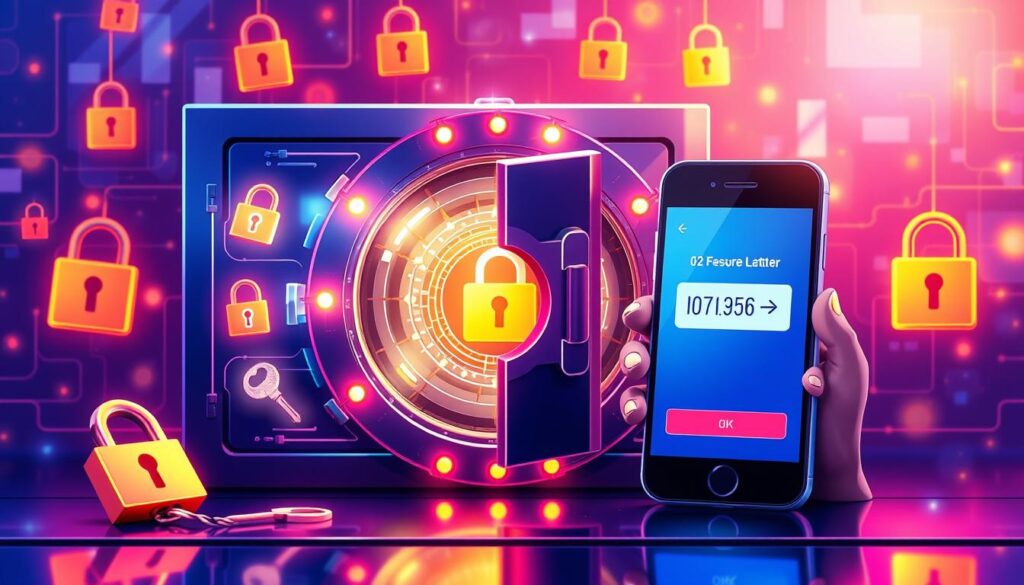
By sticking to these tips and understanding 2FA, companies can manage 2FA well. This leads to better security and a better user experience. Enjoying the perks of 2FA benefits14 is a big win.
Conclusion: Embracing Two-Factor Authentication in Your Digital Life
As we explore the online world, keeping our digital lives safe is key. Two-factor authentication (2FA) is a vital part of keeping our online presence secure. By learning about the 2fa process explained and using multi-factor authentication, we can lower the risk of cyber threats. This helps protect our personal and important data15.
Statistics show that 80% of data breaches could be stopped with 2FA. Also, 99.9% of hacked accounts could be avoided with the right setup15. With AI cracking passwords in under an hour, we need stronger security16. Using 2FA keeps us safe online.
As the internet grows, using strong security like 2FA is more important than ever. Most online sites now use 2FA, and over 50% of big services make it a must17. By using 2FA and following good practices, we can greatly reduce cyber attack risks. This keeps our personal info safe.
FAQ
What is two-factor authentication and how does it work?
What are the benefits of using two-factor authentication?
What are the different types of 2FA methods?
How do I set up two-factor authentication?
What are the security benefits of two-factor authentication?
What are the best practices for managing 2FA?
How does two-factor authentication work in practice?
What is the difference between two-factor authentication and multi-factor authentication?
Can two-factor authentication be used to protect against all types of cyber attacks?
Source Links
- 10 Cybersecurity Best Practices Your Employees Must Follow – https://teampassword.com/blog/cybersecurity-best-practices-for-employees
- What Is Two-Factor Authentication (2FA)? How It Works and Example – https://www.investopedia.com/terms/t/twofactor-authentication-2fa.asp
- What is Two-factor Authentication (2FA)? How does it work? | Fortinet – https://www.fortinet.com/resources/cyberglossary/two-factor-authentication
- Two-factor authentication (2FA) explained: How it works and how to enable it – https://www.csoonline.com/article/563753/two-factor-authentication-2fa-explained.html
- What is MFA? – Multi-Factor Authentication and 2FA Explained – AWS – https://aws.amazon.com/what-is/mfa/
- Multi-Factor Authentication (MFA/2FA) Methods – Rublon – https://rublon.com/blog/2fa-authentication-methods/
- 8 Multi Factor Authentication Types and How to Choose | Frontegg – https://frontegg.com/blog/multi-factor-authentication-types
- How Does Two-Factor Authentication (2FA) Work? – https://www.avast.com/c-how-does-two-factor-authentication-work
- Turn on 2-Step Verification – Android – https://support.google.com/accounts/answer/185839?hl=en&co=GENIE.Platform=Android
- How Two-Factor Authentication Helps Mitigate Cybersecurity Risks for Large Enterprises | BSG Blog – https://bsg.world/blog/two-factor-authentication-helps-mitigate-cybersecurity-risks/
- 9 Benefits of Multi-Factor Authentication (MFA) for SaaS App Security – https://www.reco.ai/blog/benefits-of-multi-factor-authentication-mfa
- Risks and Benefits of Two-Factor Authentication and Two-Step Verification – Onsite Helper | Google Workspace Support – https://onsitehelper.com/risks-and-benefits-of-two-factor-authentication-and-two-step-verification/
- Verification and two-factor authentication best practices – https://www.twilio.com/docs/verify/developer-best-practices
- Top 10 Multi Factor Authentication (MFA) Best Practices – Cybersecurity ASEE – https://cybersecurity.asee.io/blog/multi-factor-authentication-mfa-best-practices/
- What is Two-Factor Authentication (2FA)? and Why you need one? – https://www.acronis.com/en-eu/blog/posts/two-factor-authentication/
- “Two-Factor Authentication: Your Safety Net” – https://trustastoria.com/two-factor-authentication-your-safety-net/
- Why Two-Factor Authentication (2FA) Is Crucial for Your Online Security – https://www.hulkapps.com/blogs/ecommerce-hub/why-two-factor-authentication-2fa-is-crucial-for-your-online-security
